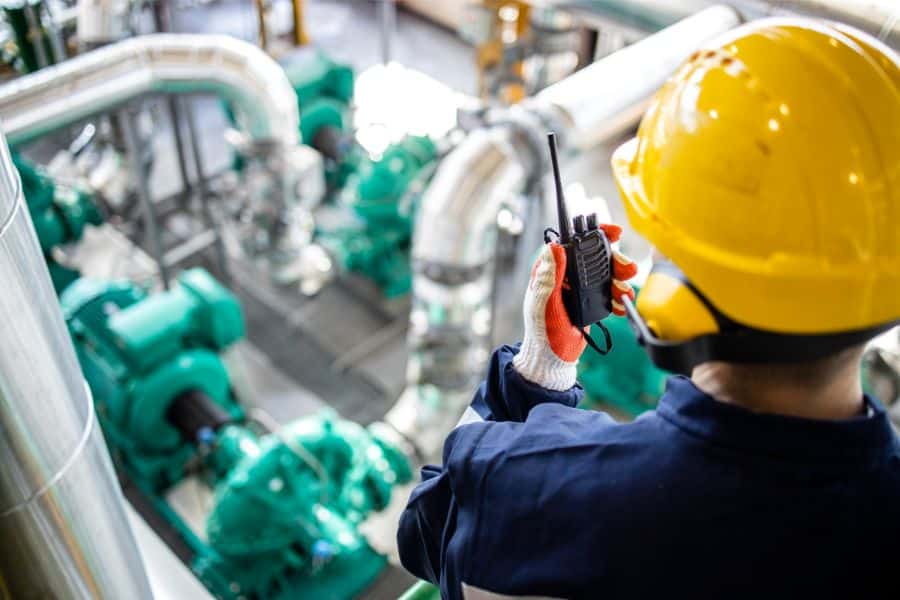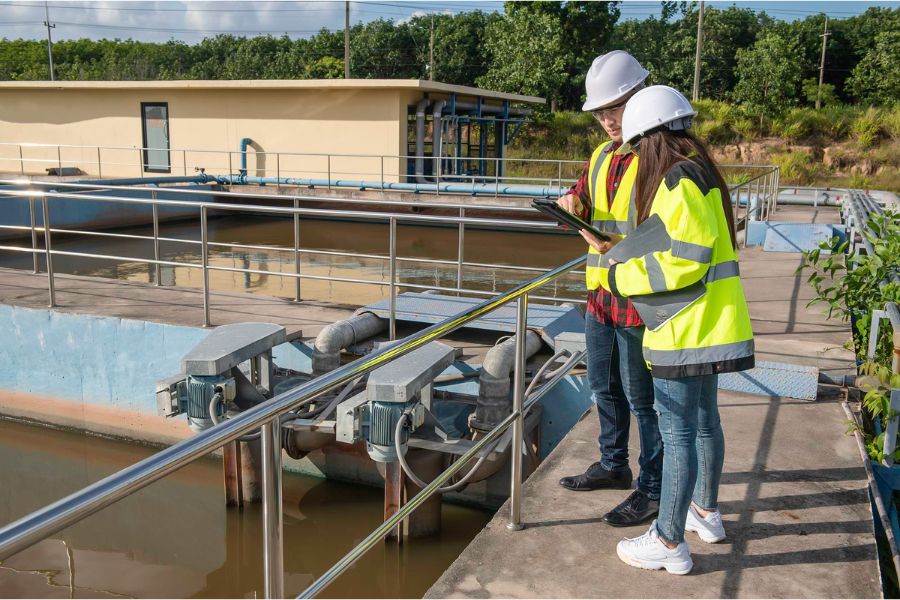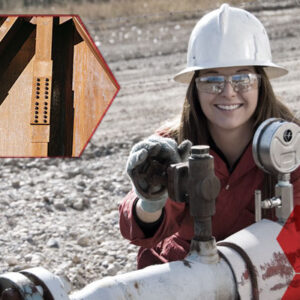The Essential Guide to Cathodic Protection Training: Everything You Need to Know
Introduction

Cathodic protection plays a crucial role in preserving the integrity of structures and equipment in various industries. To truly understand and implement this process effectively, professionals undergo specialized training. In this comprehensive guide, we will delve into the world of cathodic protection training, covering everything from its fundamental principles to the various training options available. Whether you’re new to the concept or seeking to enhance your knowledge, this guide will provide you with a solid foundation.
What is Cathodic Protection?

Cathodic Protection (CP) is a corrosion control technique widely employed in industries to safeguard metal structures and assets from deterioration caused by electrochemical reactions. The primary objective of CP is to mitigate corrosion by manipulating the electrochemical potential of the protected structure. This is achieved by introducing a sacrificial anode or impressed current system to offset the natural tendency of metals to corrode. In simpler terms, cathodic protection involves making the structure to be protected the cathode in a corrosion cell, thereby preventing the metal from undergoing oxidation.
The process can be applied to various infrastructures, including pipelines, storage tanks, offshore platforms, and underground structures. By employing cathodic protection, industries can significantly extend the lifespan of their assets and reduce maintenance costs associated with corrosion-related damage.
The Importance of Cathodic Protection in Industries

The significance of cathodic protection in industries cannot be overstated, as corrosion poses a substantial threat to infrastructure integrity and safety. Industries rely on cathodic protection for several key reasons:
Asset Preservation: Cathodic protection plays a crucial role in preserving the structural integrity of valuable assets. By preventing corrosion, industries can avoid the costly consequences of equipment failure, leaks, and structural damage.
Safety and Environmental Compliance: Corrosion-related failures can lead to hazardous situations, environmental pollution, and regulatory non-compliance. Implementing cathodic protection ensures that structures meet safety standards and environmental regulations, contributing to a secure and compliant operational environment.
Cost-Efficiency: Investing in cathodic protection is a cost-effective strategy in the long run. The upfront costs of installing and maintaining cathodic protection systems are outweighed by the savings derived from prolonged asset life and reduced maintenance expenses.
Infrastructure Reliability: Industries heavily depend on the reliability of their infrastructure. Cathodic protection enhances the dependability of structures by preventing corrosion-induced failures, thereby minimizing downtime and ensuring consistent operational performance.
Cathodic Protection Basics

Understanding the basics of cathodic protection is essential for anyone looking to pursue training in this field. This section will cover the key concepts, including the electrochemical reactions involved, different types of cathodic protection systems, and the criteria for selecting the appropriate method. A clear grasp of these fundamentals forms the foundation for more advanced training.
Corrosion Mechanism: Understanding the basics of corrosion is fundamental to cathodic protection training. Corrosion occurs when metal undergoes oxidation in the presence of an electrolyte. Cathodic protection interrupts this process by making the protected structure the cathode, where reduction reactions take place, counteracting the oxidation of the metal.
Types of Cathodic Protection: There are two primary types of cathodic protection: galvanic (sacrificial anode) and impressed current systems. Galvanic systems utilize sacrificial anodes made of a metal more reactive than the protected structure, while impressed current systems involve the application of an external power source to drive the cathodic protection process.
Monitoring and Maintenance: Effective cathodic protection requires regular monitoring and maintenance. This involves inspecting anode performance, measuring potentials, and ensuring the overall integrity of the system. Training in cathodic protection includes learning how to conduct these assessments and implement corrective measures when needed.
Different Types of Cathodic Protection Systems

Cathodic protection is a crucial technique used to prevent corrosion in various metal structures, such as pipelines, tanks, and bridges. Understanding the different types of cathodic protection systems is essential for effective corrosion control. There are primarily two types of cathodic protection systems: impressed current systems and galvanic (or sacrificial) systems.
Impressed Current Systems: This type of system utilizes an external power source to generate a direct current that counteracts the natural corrosion process. Components of an impressed current system include rectifiers, anodes, and reference electrodes. This section will delve into the working principles of impressed current systems, their applications, and factors influencing their effectiveness.
Galvanic (Sacrificial) Systems: In galvanic systems, less noble metals (sacrificial anodes) are strategically placed in proximity to the structure to be protected. These sacrificial anodes corrode instead of the protected structure, sacrificing themselves to prevent corrosion. This part of the guide will explore the selection of sacrificial anodes, installation practices, and the limitations of galvanic systems.
Cathodic Protection Equipment and Materials

Successful implementation of cathodic protection relies on the use of appropriate equipment and materials. This section will cover the essential components necessary for both impressed current and galvanic systems, providing a comprehensive overview of the key elements involved.
Anodes: Discuss various types of anodes used in cathodic protection, such as impressed current anodes (platinum, mixed metal oxide, graphite) and sacrificial anodes (aluminum, zinc, magnesium). Include details on the selection criteria based on the environment and the structure to be protected.
Rectifiers: Explain the role of rectifiers in impressed current systems, converting alternating current (AC) to direct current (DC) for cathodic protection. Cover aspects like rectifier types, sizing, and maintenance practices.
Reference Electrodes: Highlight the importance of reference electrodes in monitoring and controlling the cathodic protection process. Discuss different types of reference electrodes and their applications.
Cables and Connectors: Explore the significance of high-quality cables and connectors in ensuring efficient current transmission throughout the cathodic protection system. Include information on material selection, installation, and maintenance considerations.
Cathodic Protection Training Options

The effectiveness of cathodic protection systems relies on the knowledge and skills of the individuals responsible for their design, installation, and maintenance. This section will outline various training options available to industry professionals, ensuring they are well-equipped to implement and manage cathodic protection strategies.
Formal Courses and Certification Programs: Discuss accredited courses and certification programs offered by institutions and organizations specializing in corrosion control. Highlight the curriculum, duration, and eligibility criteria.
On-the-Job Training: Explore the benefits of on-the-job training programs, where individuals gain hands-on experience under the guidance of experienced professionals. Discuss how these programs contribute to skill development and practical knowledge.
Workshops and Seminars: Cover the significance of workshops and seminars in keeping industry professionals updated on the latest advancements in cathodic protection technology. Highlight the topics typically covered in such events and their role in continuing education.
Online Training Platforms: Discuss the emergence of online training platforms, providing flexibility and accessibility to individuals seeking cathodic protection training. Explore the features, advantages, and limitations of online courses in this field.
Benefits of Cathodic Protection Training

Investing time and resources in cathodic protection training yields numerous benefits for individuals and industries alike. This section will delve into the advantages of acquiring specialized knowledge, such as increased job opportunities, enhanced safety measures, and improved efficiency in corrosion prevention. Real-world success stories will highlight the positive impact of cathodic protection training on professionals’ careers.
1. Corrosion Prevention Expertise:
- Gain in-depth knowledge of corrosion mechanisms and principles.
- Understand how cathodic protection works as an effective method for preventing corrosion in various environments.
2. Enhanced Safety Measures:
- Learn safety protocols and best practices related to cathodic protection systems.
- Acquire skills to identify potential safety hazards and implement preventive measures.
3. Regulatory Compliance:
- Stay updated on industry regulations and standards related to cathodic protection.
- Ensure that cathodic protection systems adhere to local and international standards.
4. Cost-Effective Solutions:
- Acquire skills to assess the condition of structures and determine the most cost-effective cathodic protection solutions.
- Learn strategies to optimize the performance of existing cathodic protection systems, reducing long-term maintenance costs.
5. Career Advancement:
- Enhance professional credentials by obtaining certification in cathodic protection.
- Open up opportunities for career growth in industries such as oil and gas, water treatment, and infrastructure development.
6. Practical Hands-On Experience:
- Engage in practical training exercises to apply theoretical knowledge in real-world scenarios.
- Develop troubleshooting skills to identify and rectify issues in cathodic protection systems.
7. Networking Opportunities:
- Connect with industry professionals, trainers, and experts during training sessions.
- Build a network that can be valuable for collaboration, knowledge-sharing, and career development.
Choosing the Right Cathodic Protection Training Course

With a plethora of training courses available, selecting the right one can be challenging. This section will guide readers through the considerations to keep in mind when choosing a cathodic protection training course. Factors such as course content, accreditation, and industry relevance will be discussed to help individuals make informed decisions aligned with their career goals.
1. Accreditation and Certification:
- Choose a course that is accredited by relevant industry bodies.
- Ensure the training program offers certification recognized by the industry.
2. Comprehensive Curriculum:
- Review the course outline to ensure it covers fundamental principles, advanced topics, and practical applications.
- Look for courses that provide a well-rounded understanding of cathodic protection systems.
3. Experienced Instructors:
- Opt for courses led by experienced instructors with a background in cathodic protection.
- Check the credentials of the instructors to ensure they bring practical knowledge to the training.
4. Hands-On Training Facilities:
- Verify that the training includes practical exercises in a simulated or real-world environment.
- Practical experience is crucial for applying theoretical knowledge effectively.
5. Industry-Relevant Case Studies:
- Look for courses that incorporate real-world case studies relevant to various industries.
- Case studies provide insights into practical challenges and their solutions.
6. Flexibility and Accessibility:
- Consider the flexibility of the training schedule, especially if you have other commitments.
- Check if the course is available online or in-person, depending on your preferences and location.
7. Participant Feedback and Reviews:
- Research feedback from previous participants to gauge the effectiveness of the training.
- Positive reviews and testimonials can indicate the course’s quality and relevance.
8. Cost and Value for Money:
- Evaluate the cost of the training in relation to the content and benefits offered.
- Consider the long-term value of the skills acquired through the course.
Conclusion

In conclusion, navigating the intricate world of cathodic protection is made comprehensible and accessible. This comprehensive resource serves as an invaluable compass for individuals seeking to master the essential principles and techniques of cathodic protection. The elucidation of key concepts, the demystification of complex processes, and the emphasis on practical applications contribute to a holistic learning experience.
The significance of cathodic protection training in safeguarding infrastructure and mitigating corrosion is underscored throughout the guide, reinforcing its importance in various industries. For those eager to embark on a journey of expertise, the Corcon Institute of Corrosion emerges as a beacon of knowledge and proficiency. With a reputation for delivering cutting-edge courses, Corcon Institute stands out as a premier institution for cathodic protection training. Their curriculum, crafted by industry experts, ensures that participants receive the latest insights and hands-on experience in the field.
Aspiring professionals can easily avail themselves of these courses, thereby enhancing their skill set and contributing to the preservation of critical assets. In essence, “The Essential Guide to Cathodic Protection Training” not only equips readers with knowledge but also provides a gateway to practical, industry-relevant education through the esteemed Corcon Institute of Corrosion. Embark on this educational voyage, and empower yourself to become a proficient guardian against corrosion.
Image Reference : Freepik
Disclaimer: All trademarks, logos, and brand names are the property of their respective owners. All company, product, and service names used in this website are for identification purposes only. Use of these names, trademarks, and brands does not imply endorsement.

